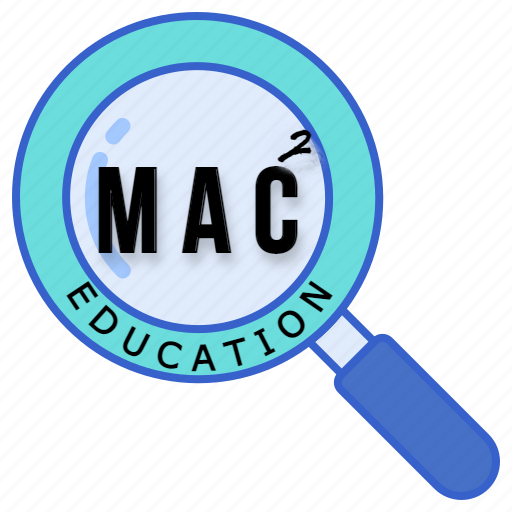Study Abroad USA
Why Study USA?
Expansive resource of opportunities. For overseas students, the United States is a truly great resource of opportunities. Employers will take notice of you if you have a US degree because it demonstrates the skills and information you have acquired while in school.
Globally recognized degrees. Your degree enables you to pursue fulfilling careers both domestically and abroad. These are some of the reasons why it’s understandable why hundreds of international students strive each year to study in this country.

Globally recognized degrees. Your degree enables you to pursue fulfilling careers both domestically and abroad. These are some of the reasons why it’s understandable why hundreds of international students strive each year to study in this country.
Diverse culture. Many of the nation’s schools and universities have sizable student populations from a variety of backgrounds, providing students with a broad and engaging academic experience.
Flexible learning environments. American universities have a very individualized approach to education. While students should anticipate working on several solo projects and tasks, they can also benefit from learning how to interact with others and collaborate in group settings.
Accessible accommodation. Numerous colleges and universities in the United States offer on-campus housing that is not located in the town center. Dorms for undergraduate (and occasionally graduate) students are present on most college campuses in the United States.
Student travel and recreation. Many college towns have a thriving nightlife with bars and clubs to enjoy. There are many other things to do, even though this can restrict your ability to partake in the nightlife.
Best quality of life. The United States is one of the few nations that provides a high standard of living. The nation is renowned not only for its academic quality but also for its economic and job stability.
Research excellence. Universities in the United States are renowned for leading research in a variety of academic subjects. Supporting research is important for a nation since it not only contributes to new learning but also fosters analytical and critical thinking in pupils.
Vibrant student experience. There are various fields to pick from for people who want to study in the US. But more than that, international students choose to study in the US because of the student life that they expect to experience.
The USA as a Study Destination
The United States is home to some of the top universities in the world. You receive the education you need to succeed in your ideal job through the programs at US universities.
To ensure that every type of student succeeds in the classroom, professors at US institutions employ a variety of teaching methods that allow students to explore the field in a more in-depth manner. Many of the courses are taught by professors with extensive backgrounds in their disciplines that’s why there is a direct link between the students and the industry.
The International Student Experience in the USA
After arriving in the United States, culture shock is one of the first things that foreign students must deal with. If you’re not from a Western nation, you can feel lost or bewildered. Some schools and universities even urge students to enroll in “core” classes, which would increase their understanding of a number of topics outside of their major fields of study.
International Student Clubs
There are organizations at some universities and colleges that are specifically for overseas students or students of a particular ethnicity
For instance, the International Students Association (ISA) at the University of Chicago welcomes all international students and works to help them integrate into campus life and the city of Chicago. It also has officially recognized national organizations, like the Chinese Students and Scholars Association, the African & Caribbean Student Association (ACSA), and many others.
On-Campus Employment
International students are permitted to work on their campuses under the United States Citizenship and Immigration Service (USCIS), even if the job’s duties have nothing to do with their academics.
Students may work on campus under the F-1 visa if they meet the following requirements:
- Limited to 20 hours a week while the academic year is in session
- Full-time work is permitted during school breaks and holidays, provided there is proof of intention to enroll for the next academic semester
- Employment does not displace a US resident
Even though the USCIS may not need to approve the employment in advance, some institutions demand clearance from the International Student Office. Keep in mind that during the first semester, certain colleges may not permit on-campus jobs.
Optional Practical Training (OPT)
Under the optional practical training (OPT) status, international students may also work off-campus. This holds true both during and after earning a degree. If a student enrolls full-time for nine months or an academic year, they are eligible to apply for OPT.
International students, however, are unable to begin working without an Employment Authorization Document (EAD). Although a job offer might not be required, it must be made as soon as possible because the hiring process might take up to 90 days.
What are the Requirements to Study in the USA?
Although many students want to study in America for higher education, not all are able to do so due in large part to academic institutions’ stringent admission standards. Here is a suggested timetable to help you get ready for your overseas studies in the US:
18 to 20 Months Prior to Study
- Know programs that suit academic goals
- Research about various colleges
- Register and prepare for entrance exams
- Improve grades in school
- Receive counseling guidance
12 to 14 Months Prior to Study
- Choose the schools to apply to
- Get a list of requirements to study in the USA for students
- Prepare and take entrance exams
12 to 14 Months Prior to Study
- Choose the schools to apply to
- Get a list of requirements to study in the USA for students
- Prepare and take entrance exams
8 to 10 Months Prior to Study
- Look for possible financing
- Complete and submit college applications
- Retake entrance exams for unsatisfactory scores
3 Months Prior to Study
- Apply for an F-1 visa
- Look for health and travel insurance
- Start travel arrangements
- Consider accommodation options
1 Month Prior to Study
- Last-minute documentary requirements
- Final travel preparations for the trip
- Prepare for classes before arrival
Following a timeline will help you start the application process early and give you enough time to sift through the numerous programs and institutions that offer the greatest education if you are eager to study in the USA.
Eligibility Requirements
- English Language Tests
- Statement of Purpose (SOP)
- Admission requirements
- Student Visa Documents
- Proof of Fund
- Student Visa
Which Exams are Required to Study in the USA?
Exams measuring English ability, the primary language spoken in the United States, will be required of international students who wish to enroll in undergraduate and graduate programs.
Undergraduate Admission Tests
- American College Testing (ACT)
- Scholastic Assessment Test (SAT)
- Test of English as a Foreign Language (TOEFL)
Application Documents
When applying to American universities, international students must prepare a wide range of documents. These consist of:
- Application Form
- English Literacy Score Proof
- Motivation Letter or Statement of Purpose
- Passport Photo
- Resume/Curriculum Vitae
- Test Scores (SAT, GRE, ACT, GMAT)
- Transcript of Records or Report Cards
- Writing Sample
How to Apply to Study in the USA?
It is simple to apply to universities in the United States. The first step is to decide the schools and programs you want to attend. Then, you must find out more about them and determine whether you meet the standards.
After that, you must register with and submit an online college or university admissions application through the Universities and Colleges Admissions Service (UCAS). Note: The application procedures and specifications for graduate programs vary.
The following step is for you to accept any offer from a university, make plans for funding, and submit a visa application.
Student Visa for Studying in the US
Depending on the type of academic experience they are applying for, international students in the US may qualify for a type of student visa.
F-1 Visa
An F-1 visa is the most common given to students who are enrolled in an academic program or an English Language Program. Under this visa, the students must take the minimum allowed course load for full-time students. They can engage in part-time, on-campus employment, and OPT. Additionally, they should complete their studies before the expiration date stated on their Certificate of Eligibility for Nonimmigrant Student Status or I-20 form.

J-1 Visa
The J-1 visa is another type issued to students who must complete practical training that may not be available in their home country. Like the F-1 visa, J-1 visa holders can also work with the same restrictions, provided that the employment is awarded via the exchange visitor program sponsor.
M-1 Visa
For students who plan to attend a vocational or non-academic school, they will be awarded an M-1 visa. This visa does not allow holders to work during study completion and they must supply proof that they have enough funds to support their tuition and other living.
